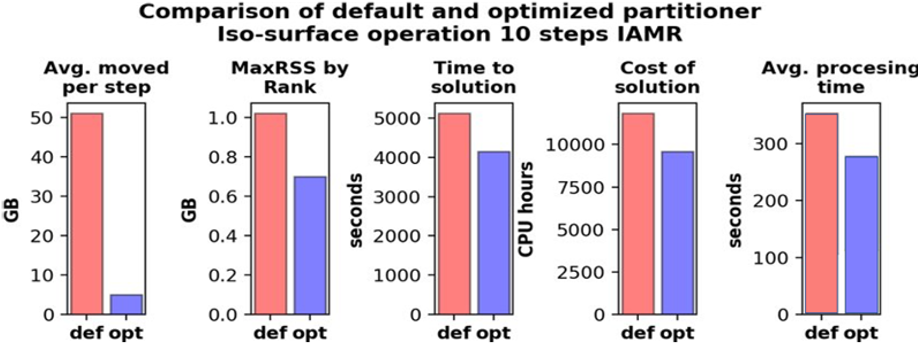Topic:

Comparing default (red) and optimized (blue) methods for in transit visualization with Sensei. The optimized approach was made possible by innovations in distributed metadata handling. Image Credit: B. Loring
The Science
Researchers from ORNL, Lawrence Berkeley National Laboratory, and Argonne National Laboratory developed a new model of metadata for supporting the efficient movement of scientific data between two parallel codes that are different sizes. With the release of Sensei 3.2, Adaptable IO System (ADIOS) technology developed by an ORNL-led team has been incorporated as a reference implementation for this new capability by:
- mapping initial ADIOS 1.X schema into the new ADIOS 2.X API;
- using the many available ADIOS engines to test different strategies for in transit communication; and
- leveraging ADIOS 2.5 capabilities to support AMR science codes.
The Impact
This work enables right-sizing of resources used for analysis and visualization components, ensuring that resources are not wasted on the producer or consumer side.



